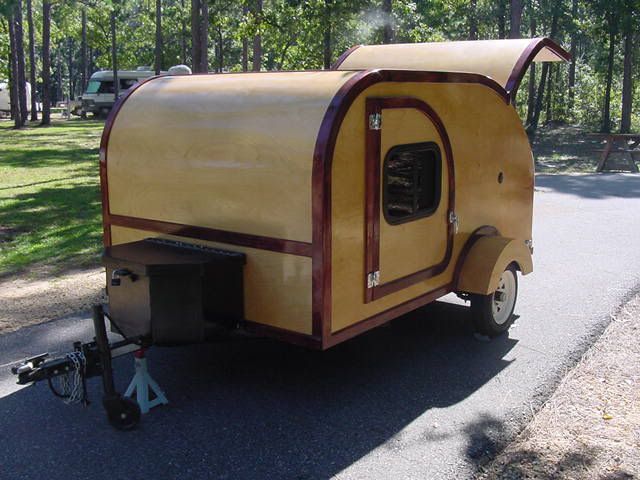This is quite off topic from teardrops...
We had a major hail storm back on Good Friday this past spring and I am finally getting around to having my aluminum siding and roof replaced. I have a two-story home built in 1918. Currently, there is aluminum siding over insul-brick over the original clapboard siding.
Since the house is not insulated (except for the insu-brick), I was thinking about blowing in cellulous insulation before the new siding goes up. I have heard conflicting views on whether or not it is a good idea to blow insulation on a sided house because of the possibility of moisture problems. There are lots of houses here in my area where it has been done for years and I have never heard of any problems. I have original windows that have been repaired, but the house is not air tight by any means.
Can anyone offer some advice as to whether they believe this is a good move? I don't plan to be here in the house for more than a few more years and I figured that it would be a good selling point when I eventually sell. Also, Indiana has a tax break for energy-saving improvements. Between that and heating cost savings, I could probably pay for it in a year or two.
What do you think? Do any of you have experience with this?
Question about insulating my home...
7 posts
• Page 1 of 1
Question about insulating my home...
4x8 Cubby
"Finished" October, 2005
Gone, but not forgotten!
"Finished" October, 2005
Gone, but not forgotten!
-

IndyCubby - Teardrop Master
- Posts: 210
- Images: 16
- Joined: Fri Sep 09, 2005 1:28 pm
- Location: Indianapolis, Indiana
IndyCubby... I have used blown in cellulose insulation in the walls of every old house I have redone (30+). I learned early on that it does settle over time a bit. So... the cure for that is to blow it in then pack it down some. Most of the houses I've done with it had wood siding or cedar shingles; so, I just remove the top board or row of shingles and under the windows. Then blow it in the stud bays. I made a simple packing tool with a 12 foot length of 1/2" PVC pipe with a wood board that will fit loosly in the stud bay attached on then end. The pipe is flexible enough it will fit in the wall easily. I just tamp it down, then blow in some more insulation till I get it full again. Basicly, I am forcing all the "settling" in advance this way. It probably uses about 20% more insulation this way, but it also makes sure you have no voids. This method also is a good way to find any blocking, electrical boxes, etc that may get in the way of filling the walls. I have had an engineer friend check a couple of the bigger houses I did with his infrared imaging camera before and after insulation. You can spot any voids or thermal leaks easily on his computer screen, and fix them. He also can give me an "R" factor reading before and after with it. Packing down does not reduce the cellulose's insulating ability at all... In most cases it slightly increases it. Of course I didn't invent this method... About 20 something years ago I read about a 1700's church up north somewhere that had done this with great success based on the advise of an engineer. You may be able to find it with a Google search? Of course I also use it in attics too. I have about 16 to 18 inches of cellulose in my attic in my 1896 house I'm living in. That is about twice what is recomended in my part of Florida. My electric bill is about half what most of my neighbors is in the summer. So that was a good $500. investment 13 years ago. Hope this helps some.
friend ~ Brick
friend ~ Brick

<B>~ Brick
<I>... I've done so much with so little for so long... Now I can do almost anything with nothing! </I></B>
 ...Lots more pix here!
...Lots more pix here!
<I>... I've done so much with so little for so long... Now I can do almost anything with nothing! </I></B>
 ...Lots more pix here!
...Lots more pix here!-

Podunkfla - ol' noodle haid
- Posts: 2261
- Images: 5
- Joined: Fri Aug 04, 2006 9:25 pm
- Location: North Florida near the Suwannee River

